There are plenty of ways to fail at marketing.
Like when the New York Times meant to send 300 unsubscribers an opportunity to renew at a discounted price. Instead they blasted the message to 8 million people on their email list. What a way to make loyal customers feel rewarded.
Sure, this email marketing fail was probably harmful to the bottom line, and a sign that the Times should be more careful with its marketing automation resources.
But the most unforgivable marketing sins stem from a more fundamental miscalculation: failure to know your audience and to anticipate its reaction to your branded content.
It’s why we’ve said in previous blog posts that “know thy audience” is the first commandment of content marketing. Violate it, and you’re in for a world of hurt.
With that in mind, let’s review some of the most regrettable marketing campaign fails and the brands behind them:
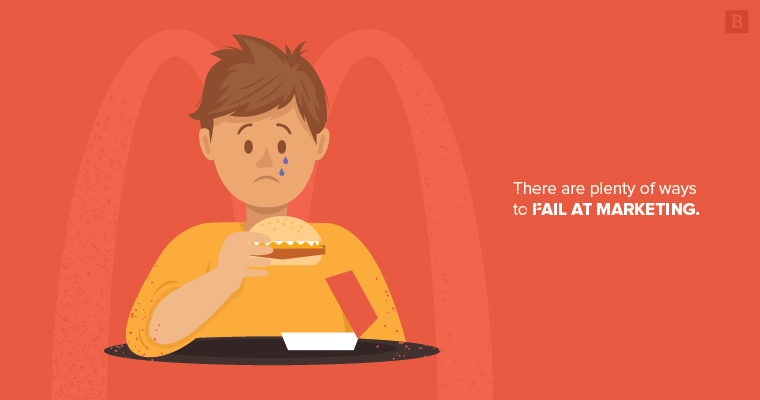
1. Pepsi: You know the one …
You could be forgiven for thinking this GIF is a scene from a terrible film about how Kendall Jenner and the millennials fought for and won the right to drink Pepsi.
The real setting was modern America, and this was Pepsi’s implicit representation of the Black Lives Matter movement. They got it wrong, and the internet made them pay for it, first with vociferous backlash, and then with a barrage of well-earned memes:
One of our favorites:
— David Weiner (@daweiner) April 4, 2017
Another good one:
“I’M TELLIN’ YOU I GAVE THE OFFICER A PEPSI AND HE TOOK HIS HAND OFF HIS NIGHT STICK!”
“Whoa slow down lemme get this straight…” pic.twitter.com/pM1uy66vft
— Eric Haywood (@EricHaywood) April 5, 2017
So what went wrong here? First, Pepsi severely miscalculated the importance of its brand. Yes, it’s a big, recognizable name, but that doesn’t mean it should weigh in one of the most important issues of our generation. They sell soda.
Which brings us to grievance No. 2. There’s a false promise about what Pepsi provides at the end of this ad: harmony in a divided nation. And sure, hyperbole about what products can achieve can be funny (Geico’s “get more” ad campaign is a perfect example of this). But Geico’s commercials are very obviously tongue-in-cheek. Those are OK. This is not:
But the worst aspect of this fiasco is that someone thought an entire generation of people would relate to this ad. In other words, this is what Pepsi thinks you value, millennials. Either that, or they never actually took the time to figure it out.
2. Spearmint Rhino Australia: Babies + strip club = what exactly?
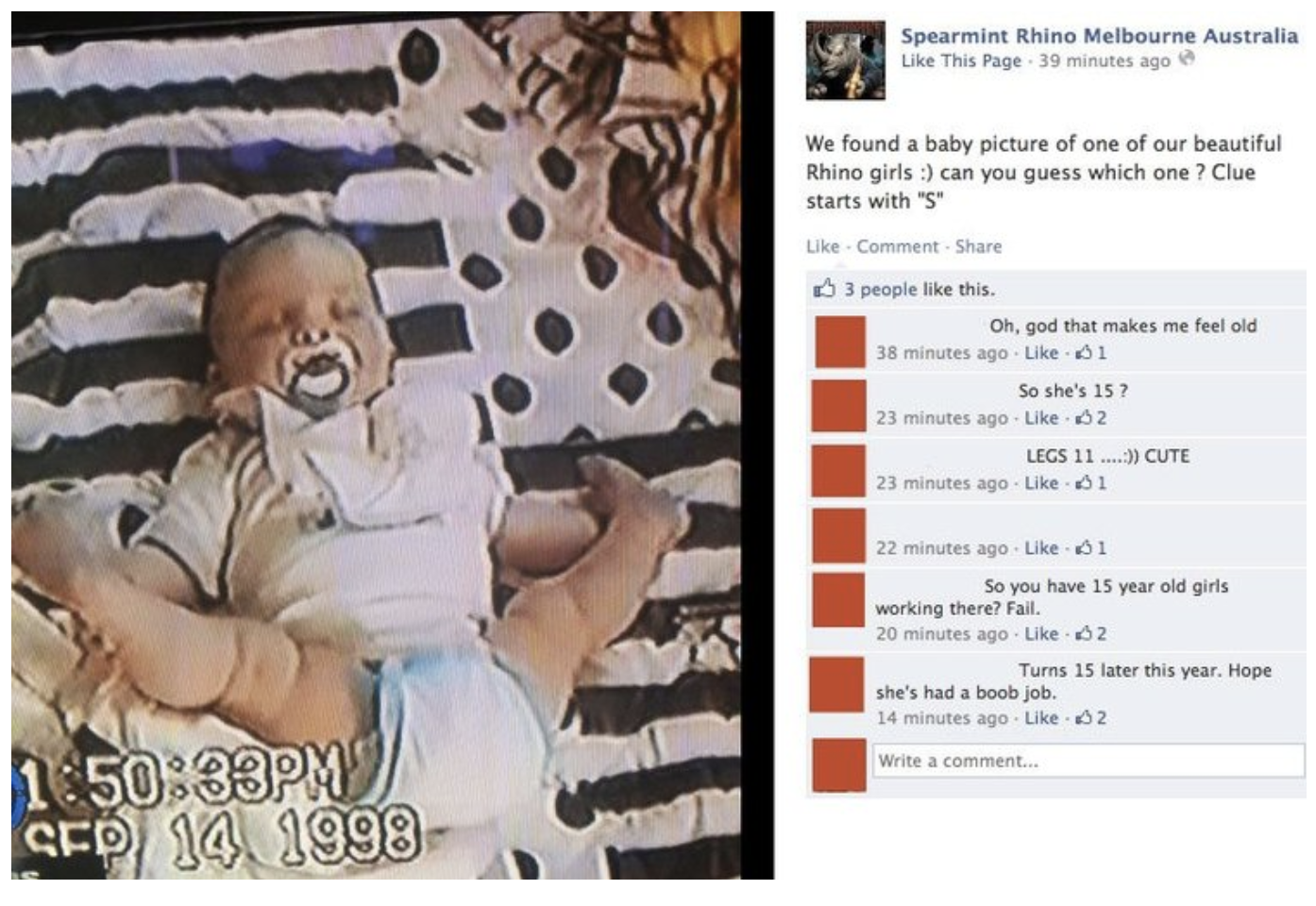
Trying to garner brand attention for a strip club by posting pictures of a baby on social media is risque. If only Spearmint Rhino’s woes ended there, though.
The date on the VHS freeze frame indicates that, at the time of the posting, the performer would have been about 15 years old, which is well below Australia’s minimum age requirement of 18. This means they either provided evidence that they’re breaking the law or that the social media manager showed really poor judgement when they created that image.
Legality aside, there’s also a question of intent, and Spearmint Rhino’s marketing message is unclear.
Let’s say for the sake of argument that the goal was to humanize its dancers by showing them as babies. It’s an important stance for a brand like Spearmint Rhino since their business is so reliant on female performers, and because there are dissenting opinions about whether stripping is objectifying or empowering.
If Spearmint Rhino’s was a message of empowerment for female performers (again, this is an attempt by our marketing team to understand why this post exists), it missed the mark in several ways:
- It probably should have been part of a bigger, more carefully-crafted companywide marketing campaign.
- They shouldn’t have made people question if they’re hiring 15-year-olds, and if they are, then that’s a whole other issue.
Most people will walk away from this feeling uncomfortable or confused.
3. McDonald’s: Son reminds mother of dead husband only while eating Filet-O-Fish (seriously)
There’s a right way to do emotional marketing and this is not it.
A young boy asks his mother about his late father. She tells him his dad was tall, a good soccer player, a ladies’ man and a snappy dresser, all things the son is not. But when the boy orders a Filet-O-Fish, his mother tears up because that was his dad’s favorite.
Even if you see past the insensitivity of using a child’s grief to sell sandwiches, a shared appreciation for Filet-O-Fish is hardly a compelling payoff for this story. This speaks to the fact that your product doesn’t have to be the punchline of an emotional appeal to your audience.
There’s nothing wrong with emotional marketing, but if you’re going to use a heartfelt issue as your anchor, you probably shouldn’t use a product benefit as consolation for, or the solution to, that issue, especially when that product is a sandwich (i.e., “you have nothing in common with your more talented, better-dressed, dead father, but hey! you guys like the same sandwich”).
A better way to approach emotional marketing is to focus on brand values. A wonderful example is Always’ #Likeagirl campaign.
Rather than positioning its products as an answer to the derogatory implications of the phrase “like a girl,” Always espouses its brand values by urging women to reclaim those words. That’s a lot more meaningful than Pepsi implying it can solve racial tension or McDonald’s trying to convince us that a Filet-O-Fish is a meaningful genetic link.
4. DiGiorno’s Pizza: #Whyistayed
Example of a brand using a trending topic without understanding the context #Advertising #SocialMedia #WhyIStayed pic.twitter.com/iTSmfaT6Xv
— Scott Paul (@scottfpaul) September 9, 2014
For those who don’t know, #WhyIStayed/#WhyILeft trended in November 2014 after a domestic violence incident involving Ray Rice and spouse Janay Rice.
DiGiorno failed to understand that the hashtag pertained to a person’s choice to stay in an abusive relationship or leave. And the rest is history.
To DiGiorno’s credit, the account admin responded to the backlash with what appeared to be a sincere apology and also directed apologies to many of the rightly offended people who commented on the egregiousness of the faux pas:
Even if you can forgive DiGiorno, it’s hard to forget how big of a blunder this was.
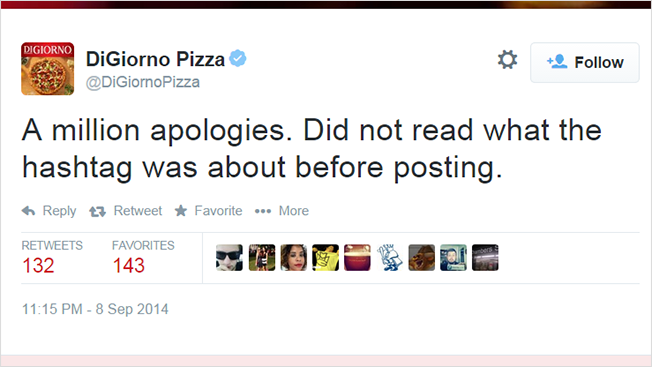
In this case, DiGiorno didn’t necessarily misunderstand its audience; they just completely botched the message and that can be just as bad or even worse …
5. Nivea and Dove: Associations between whiteness and cleanliness
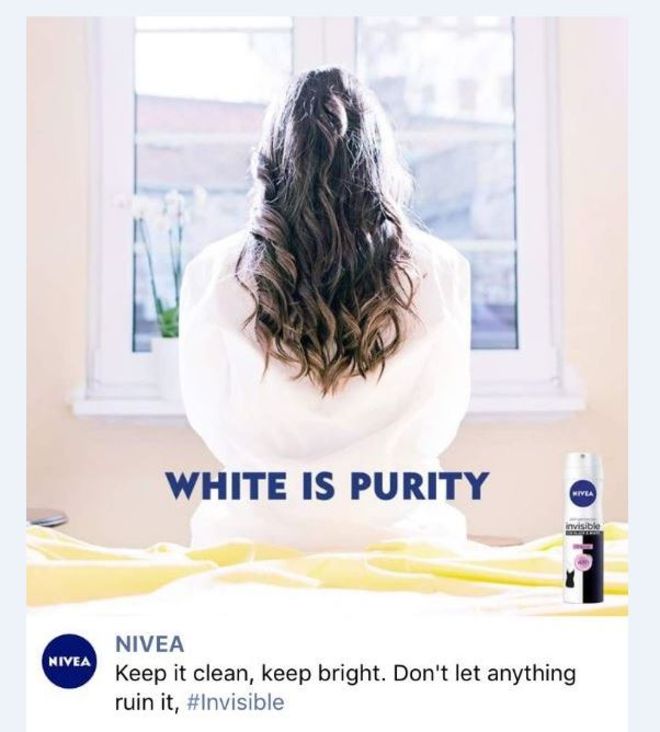
The white supremacist undertones of this advertising campaign were so evident that the alt right chimed in:
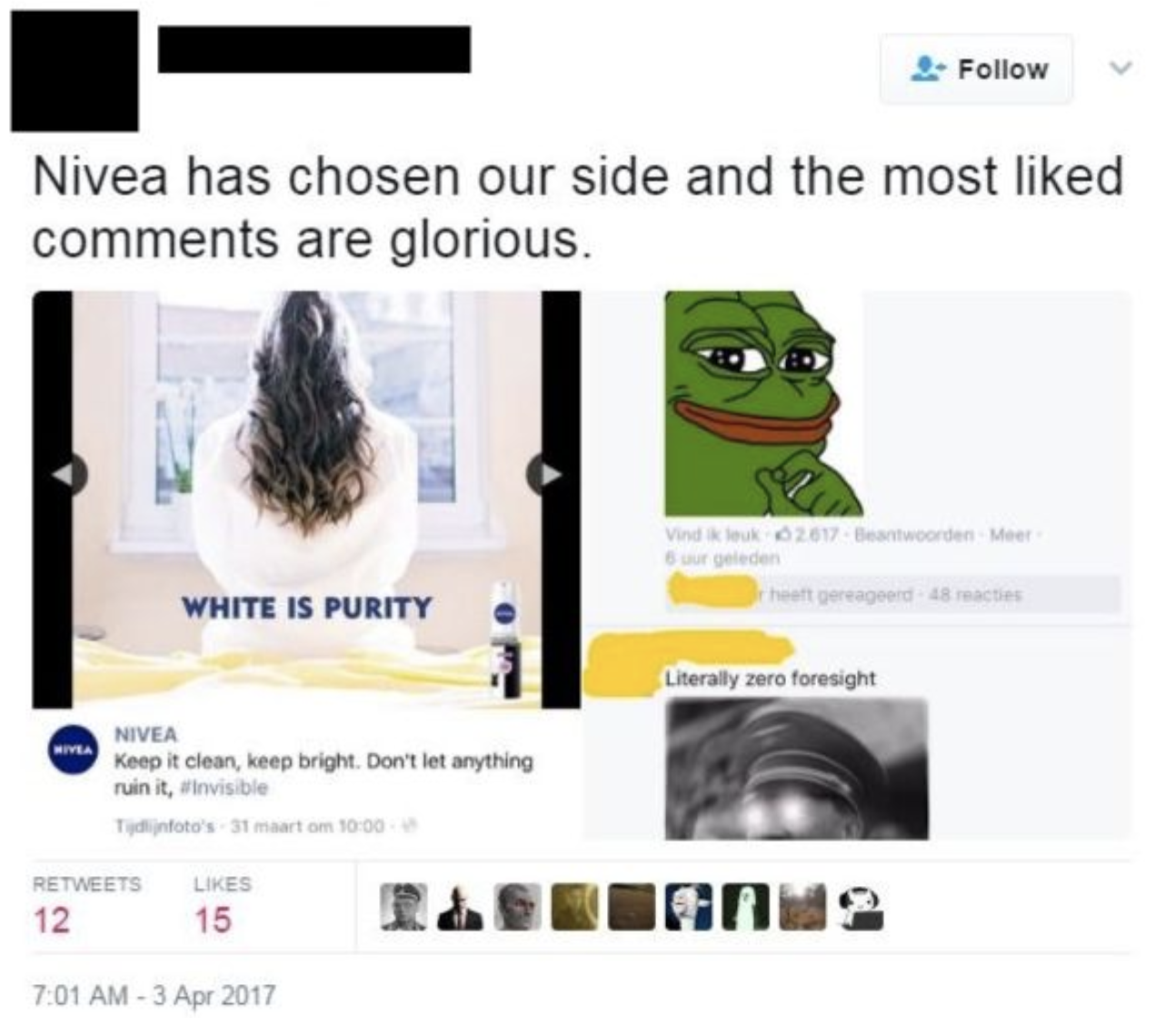
Talk about a miscalculation. This ad was intended for the Middle Eastern market. You would think celebrating “whiteness” would not be the instinct – and from a German company no less. You just can’t make this stuff up.
Nivea’s marketing fail also highlights the effect of unintended consequences. Surely, they were not trying to get the alt right’s attention, but let that be a lesson for what happens when you fail to think carefully about the message you send.
Speaking of which:
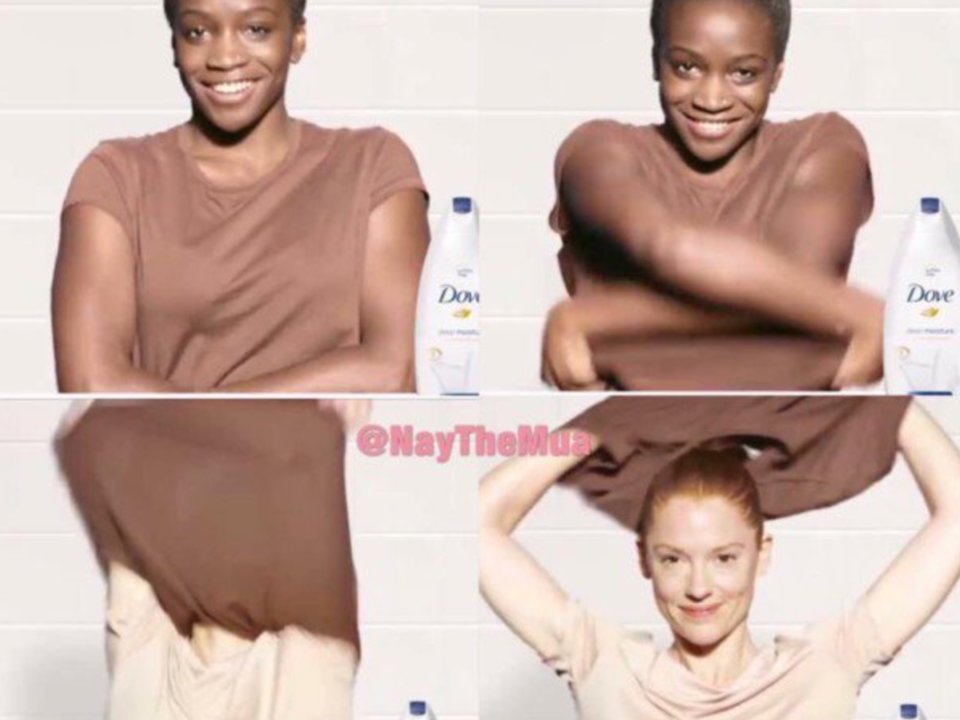
Dove somehow overlooked how a black woman becoming white after using their product could be perceived negatively, which is alarming. The only thing that would be more alarming is if they had already made the same mistake.
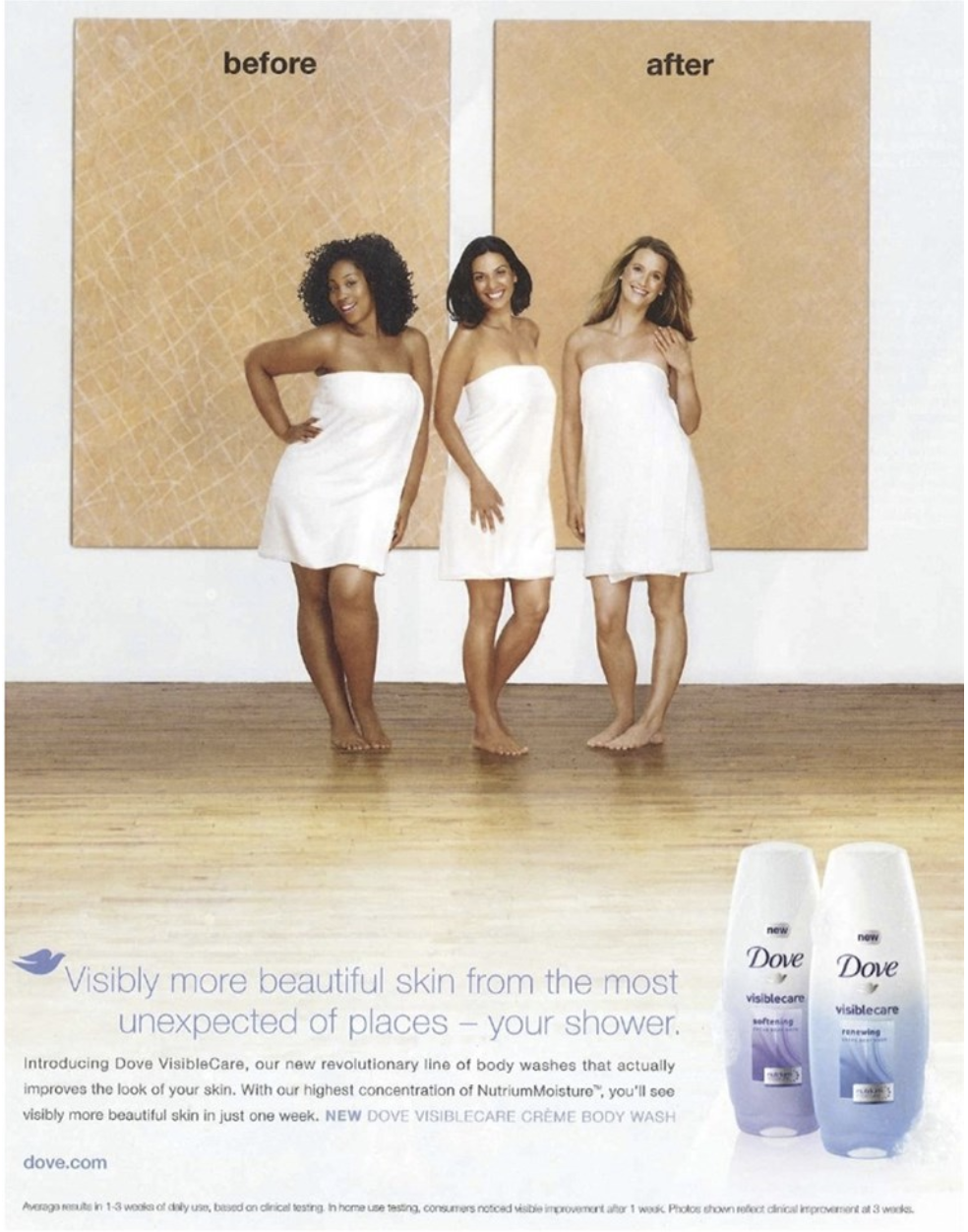
The above photo is of a separate campaign from 2011, and it shows how a plus-size black woman becomes a skinny white woman after using Dove’s products. Dove clearly has a history of making a real mess of its “real beauty” messaging.
The reason Dove and Nivea failed so colossally is that they didn’t try hard enough to understand, let alone empathize with, their target audiences, or to anticipate how the message might come across. The result was unforgivably awful marketing, earning them a spot on this list of marketing fails, and countless others.
It’s like we always say: Know your audience, and build your messaging around it. At its best, marketing is an incredible force that informs, entertains and inspires.
But at its worst, it’s a foot in your mouth, a blemish on your brand and a big dent in your bottom line.





